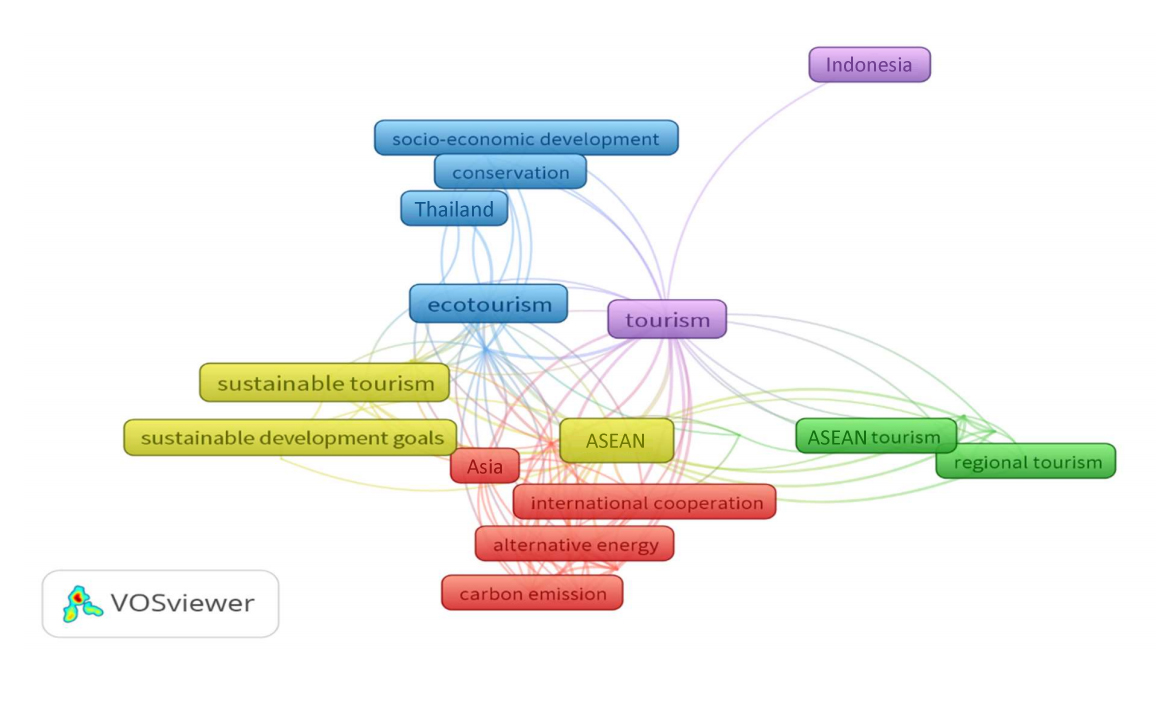Hue, Vietnam Leads the Sustainable Tourism Trend: Heritage Sites and Community-Based Eco-Tours Drive Record Visitor Growth in 2025 – Travel And Tour World

Report on Sustainable Tourism Development in Hue, Vietnam (2025)
Executive Summary
In the first half of 2025, the city of Hue, Vietnam, demonstrated significant progress in aligning its tourism sector with the United Nations Sustainable Development Goals (SDGs). By strategically integrating cultural heritage preservation with community-based eco-tourism, Hue has achieved a 26% year-on-year increase in visitor arrivals, totaling 1.22 million. This report analyzes the key drivers of this growth, focusing on the city’s commitment to sustainable practices that support economic prosperity, community well-being, and environmental protection.
Analysis of Visitor Growth and Economic Impact (SDG 8)
The substantial increase in tourism activity has directly contributed to SDG 8: Decent Work and Economic Growth by fostering local economic development and creating employment opportunities. Key performance indicators for the first half of 2025 include:
- Total Visitor Arrivals: 1.22 million, a 26% increase compared to the same period in 2024.
- Overnight Stays: 1.04 million, a 30.3% increase, indicating longer, more immersive visits.
- Same-Day Visitors: 213,000, an 8.5% increase.
This growth is fueled by a diversified tourism portfolio that includes high-profile cultural events such as the Hue Festival and Visit Vietnam Year – Hue 2025, which stimulate the local economy.
International Market Diversification
Hue has successfully attracted a diverse range of international visitors, strengthening its global position. The top ten international source markets are:
- France (14.5% of international arrivals)
- United States
- Germany
- United Kingdom
- Australia
- Taiwan
- Italy
- Malaysia
- Thailand
- Spain
Strategic Initiatives for Sustainable Cities and Communities (SDG 11)
Hue’s tourism strategy is fundamentally aligned with SDG 11: Sustainable Cities and Communities, which aims to make human settlements inclusive, safe, resilient, and sustainable. Key initiatives include:
- Cultural Heritage Preservation: Safeguarding and promoting Hue’s imperial heritage sites as a cornerstone of its tourism identity.
- Community-Based Tourism: Empowering rural localities by developing eco-tourism and agri-tourism. Notable examples are cycling tours to Phuoc Tich ancient village, garden house visits in Kim Long, and tours of the Tam Giang – Cau Hai lagoon fishing villages. These programs ensure that economic benefits are distributed to local communities.
- Sustainable Transport: Establishing a “bicycle city” identity through public bicycle schemes, community cycling campaigns, and the use of electric vehicles at tourist sites.
- Public Space Enhancement: Expanding pedestrian-only zones to improve urban livability and reduce traffic-related pollution.
Promotion of Responsible Consumption and Climate Action (SDG 12 & SDG 13)
The city is actively promoting sustainable practices that support SDG 12: Responsible Consumption and Production and SDG 13: Climate Action.
- Green Tourism Products: Offering environmentally conscious experiences such as eco-boat tours on the Huong River and promoting events like “Net Zero Day in Hue” to raise environmental awareness.
- Resource Efficiency: Reducing physical waste and the carbon footprint through the digitization of services, including electronic ticketing and the use of Augmented Reality (AR) and Virtual Reality (VR) technologies.
- Local Sourcing and Experiences: Encouraging visitors to participate in authentic local activities like gardening and traditional cooking, which supports local supply chains and reduces the environmental impact of imported goods.
Future Outlook and Commitment to the SDGs
Hue is committed to reinforcing its status as a leader in sustainable tourism. Future plans are designed to deepen its alignment with the SDGs through the following actions:
- Enhanced Conservation: Strengthening efforts to protect natural and cultural heritage, contributing to SDG 14 (Life Below Water) and SDG 15 (Life on Land) through responsible management of sites like the Tam Giang – Cau Hai lagoon.
- Deepened Partnerships (SDG 17): Increasing collaboration with international bodies like UNESCO and local stakeholders to ensure responsible tourism governance.
- Technological Integration: Expanding the use of smart tourism solutions and digital services to facilitate seamless, eco-friendly visitor experiences.
- Infrastructure Investment: Continued investment in new community-based tourism projects and sustainable infrastructure.
Conclusion
Hue’s tourism performance in 2025 provides a compelling model for balancing economic growth with environmental and social responsibility. By embedding the principles of the Sustainable Development Goals into its core strategy, the city has successfully enhanced its appeal to conscientious travelers. This balanced approach ensures the long-term viability of its tourism sector while safeguarding its unique cultural and natural assets for future generations, positioning Hue as a premier global destination for sustainable and culturally rich travel.
SDGs Addressed in the Article
The article on Hue, Vietnam’s tourism strategy highlights several Sustainable Development Goals (SDGs) by focusing on economic growth, cultural preservation, environmental protection, and community involvement. The following SDGs are directly addressed or connected to the issues discussed:
- SDG 8: Decent Work and Economic Growth – The article emphasizes the economic benefits of tourism, such as the significant increase in visitor arrivals and overnight stays, which contributes to local economic growth and job creation.
- SDG 11: Sustainable Cities and Communities – This is a central theme, with a strong focus on protecting and safeguarding cultural heritage (imperial treasures, ancient villages), promoting sustainable transport (cycling, electric vehicles), and creating inclusive public spaces (pedestrian-friendly zones).
- SDG 12: Responsible Consumption and Production – The article details Hue’s commitment to sustainable tourism through “eco-friendly practices,” “green tourism innovations,” reducing waste via electronic ticketing, and promoting the sustainable use of resources.
- SDG 13: Climate Action – Initiatives like promoting cycling to create a “bicycle city,” introducing electric vehicles, and organizing events like “Net Zero Day in Hue” are direct actions aimed at minimizing the carbon footprint and addressing climate change.
- SDG 14: Life Below Water – The promotion of “Eco-boat tours along the picturesque Huong River” and tours of “scenic fishing villages surrounding Tam Giang – Cau Hai lagoon” with a focus on maintaining “environmental integrity” connects to the sustainable use of aquatic ecosystems for tourism.
- SDG 17: Partnerships for the Goals – The article explicitly mentions future plans to deepen “Collaboration… with both international organizations like UNESCO and local stakeholders to ensure responsible tourism practices and sustainable development.”
Specific Targets Identified
Based on the article’s content, several specific SDG targets can be identified:
-
SDG 8: Decent Work and Economic Growth
- Target 8.9: “By 2030, devise and implement policies to promote sustainable tourism that creates jobs and promotes local culture and products.” The article directly supports this by describing how Hue has focused on heritage tourism, community-based eco-tours, and cultural events (“Hue – Culinary Capital,” ao dai fashion shows) to drive visitor growth and economic benefits.
-
SDG 11: Sustainable Cities and Communities
- Target 11.4: “Strengthen efforts to protect and safeguard the world’s cultural and natural heritage.” This is evident in Hue’s strategy, which is built around its “imperial treasures,” “ancient village of Phuoc Tich,” and future plans for “strengthening conservation efforts to protect Hue’s natural and cultural heritage.”
- Target 11.7: “By 2030, provide universal access to safe, inclusive and accessible, green and public spaces…” The article mentions the “expanding pedestrian-friendly zones” and the promotion of “public bicycles,” which aligns with creating accessible and green public spaces.
-
SDG 12: Responsible Consumption and Production
- Target 12.b: “Develop and implement tools to monitor sustainable development impacts for sustainable tourism…” Hue is implementing various tools and initiatives like “green tourism,” “eco-friendly practices,” and digital services (e-ticketing, AR/VR) to manage and monitor the impacts of tourism. The reported visitor growth is presented as a positive result of these sustainable practices.
-
SDG 13: Climate Action
- Target 13.2: “Integrate climate change measures into national policies, strategies and planning.” Hue is integrating climate action into its local tourism strategy by promoting low-carbon transport like cycling and electric vehicles and aiming to “minimize the carbon footprint.”
Indicators for Measuring Progress
The article mentions or implies several indicators that can be used to measure progress towards the identified targets:
-
Indicators for SDG 8 (Target 8.9)
- Total visitor arrivals: The article states “about 1.22 million arrivals” in early 2025.
- Year-on-year growth in tourism: A “26% jump over the same six months in 2024.”
- Number of overnight stays: “over 1.04 million overnight stays,” a 30.3% rise.
- Number of community-based tourism products: The article lists several, including tours to Phuoc Tich village, garden houses, and Tam Giang lagoon.
-
Indicators for SDG 11 (Targets 11.4 & 11.7)
- Number of cultural and tourism events: The article lists the “Visit Vietnam Year – Hue 2025,” “Hue Festival,” and others.
- Investment in heritage conservation: Mentioned as part of “Forward-looking Plans.”
- Availability of sustainable transport options: The article points to the introduction of “public bicycles and electric vehicles at popular tourist sites.”
- Area of pedestrian-friendly zones: The “expanding pedestrian-friendly zones” is a clear indicator.
-
Indicators for SDG 12 (Target 12.b)
- Adoption of digital services: The use of “electronic ticketing and incorporating AR/VR technology” to reduce physical waste.
- Number of green tourism initiatives: The article mentions “community cycling campaigns” and “Eco-boat tours.”
-
Indicators for SDG 13 (Target 13.2)
- Uptake of low-carbon transport: The “increasing popularity of cycling tours and public bicycles” establishes Hue’s identity as a “bicycle city.”
- Climate-focused events: The organization of events like “Net Zero Day in Hue.”
-
Indicators for SDG 17 (Target 17.17)
- Number of multi-stakeholder partnerships: The planned “Collaboration… with both international organizations like UNESCO and local stakeholders.”
Summary of SDGs, Targets, and Indicators
| SDGs | Targets | Indicators |
|---|---|---|
| SDG 8: Decent Work and Economic Growth | 8.9: Promote sustainable tourism that creates jobs and promotes local culture and products. |
|
| SDG 11: Sustainable Cities and Communities | 11.4: Strengthen efforts to protect and safeguard the world’s cultural and natural heritage. 11.7: Provide universal access to safe, inclusive and accessible, green and public spaces. |
|
| SDG 12: Responsible Consumption and Production | 12.b: Develop and implement tools to monitor sustainable development impacts for sustainable tourism. |
|
| SDG 13: Climate Action | 13.2: Integrate climate change measures into policies, strategies and planning. |
|
| SDG 14: Life Below Water | 14.7: Increase the economic benefits… from the sustainable use of marine resources, including through sustainable… tourism. |
|
| SDG 17: Partnerships for the Goals | 17.17: Encourage and promote effective public, public-private and civil society partnerships. |
|
Source: travelandtourworld.com

What is Your Reaction?
 Like
0
Like
0
 Dislike
0
Dislike
0
 Love
0
Love
0
 Funny
0
Funny
0
 Angry
0
Angry
0
 Sad
0
Sad
0
 Wow
0
Wow
0


-1920w.png?#)





































































